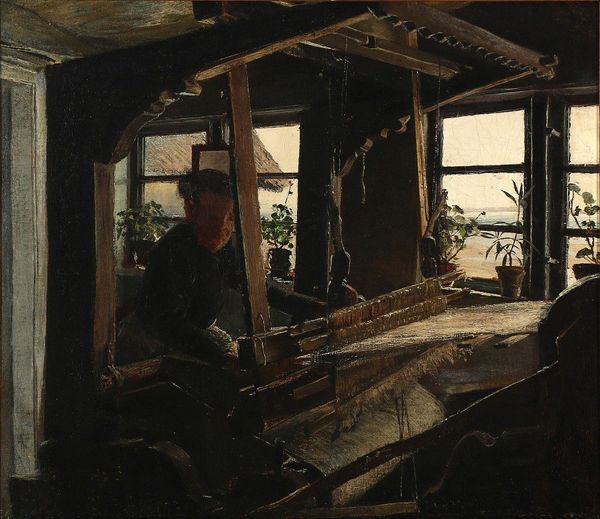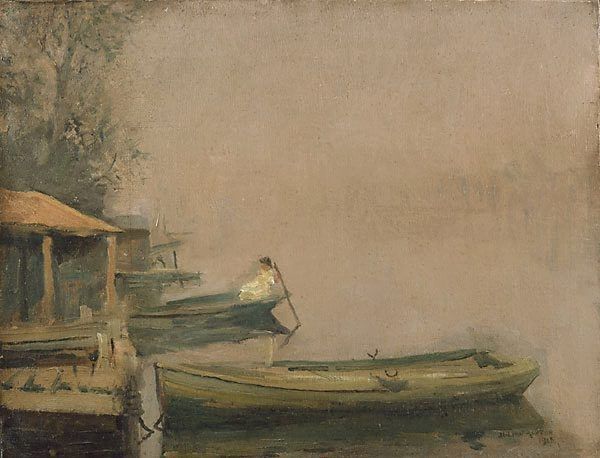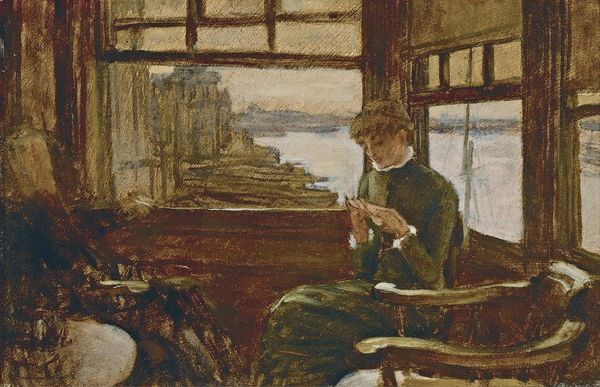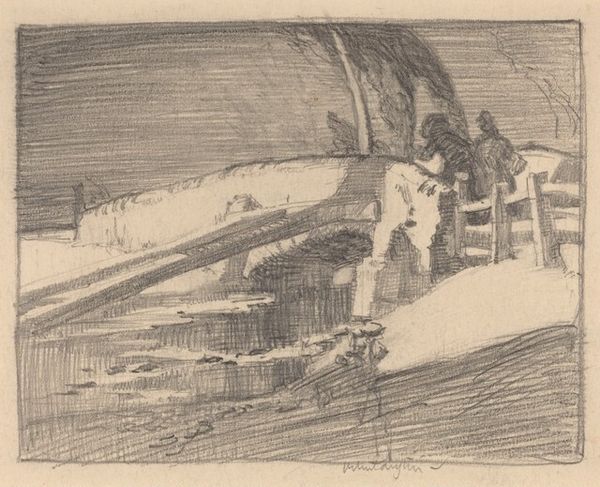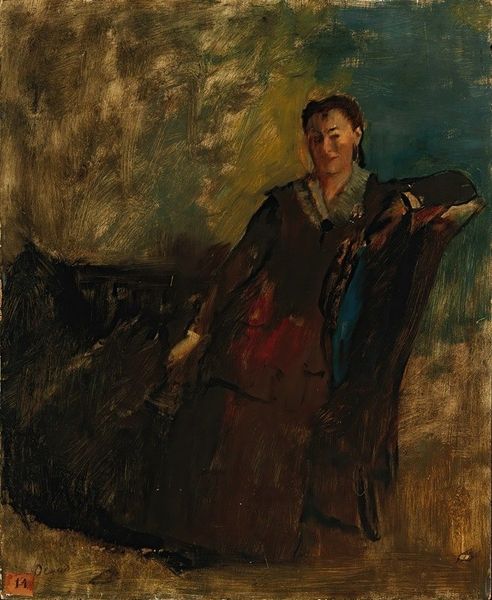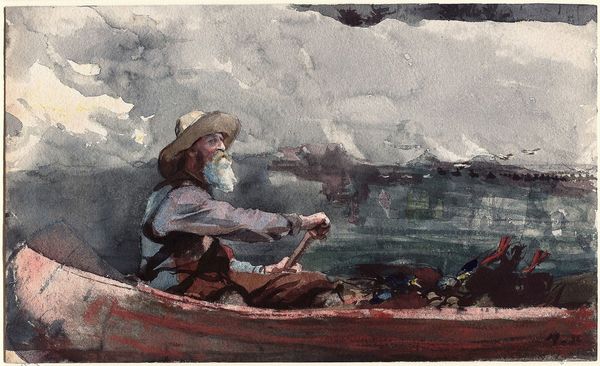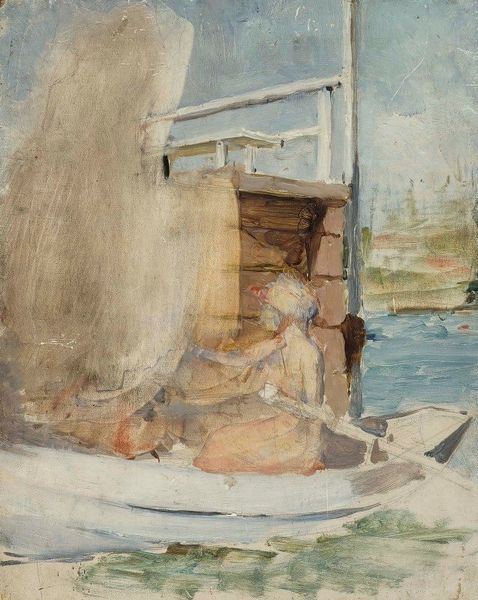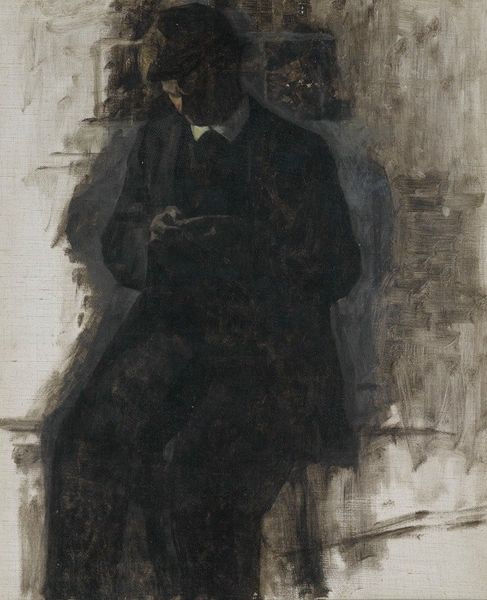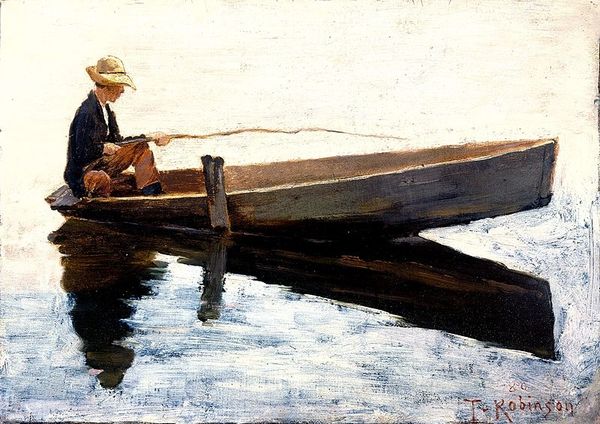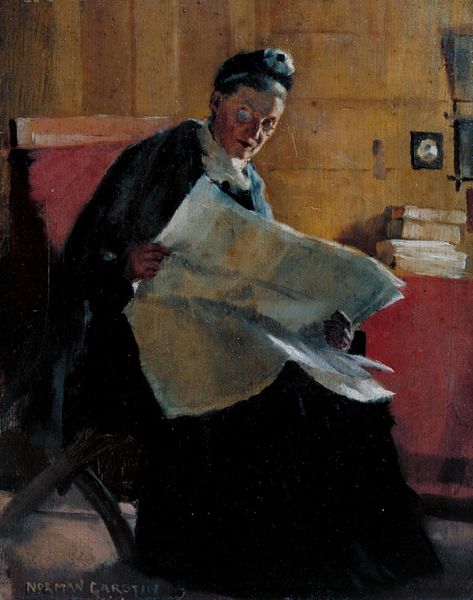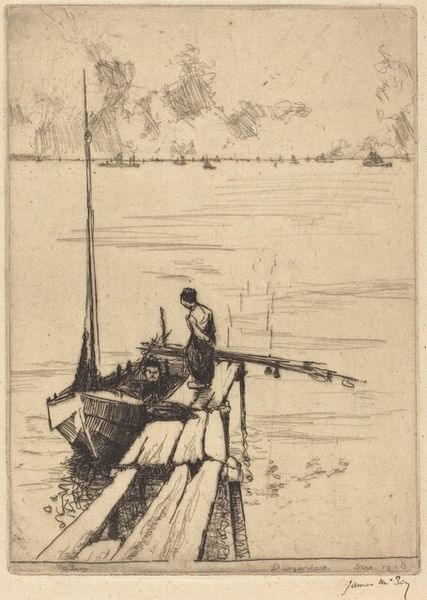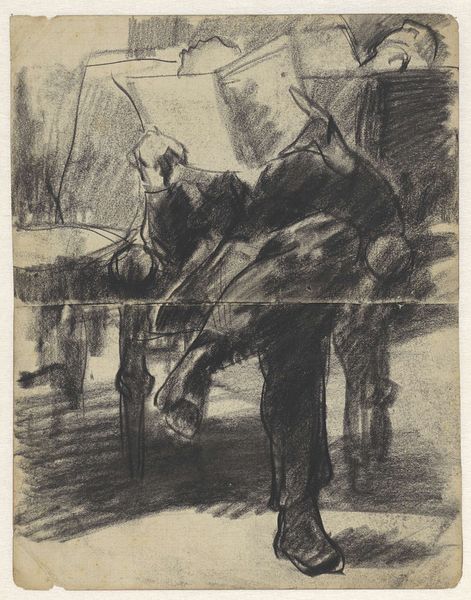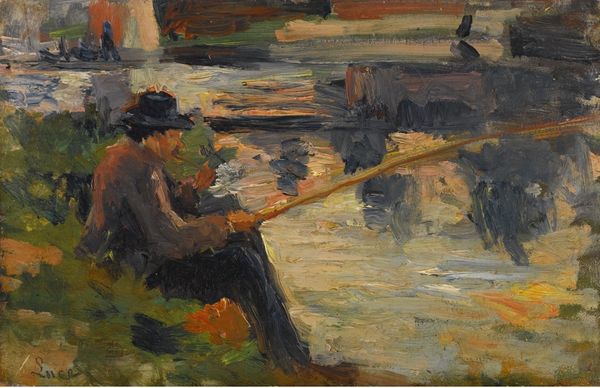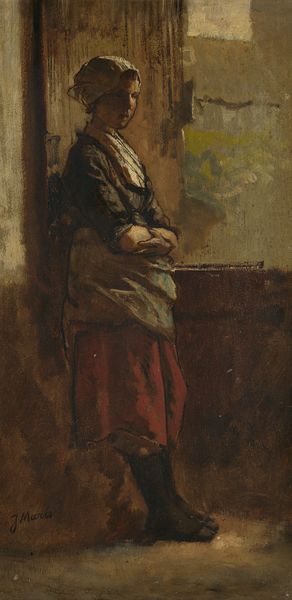
Copyright: Public domain
Curator: Here we have Konstantin Alexeevich Korovin's oil on canvas painting, "On the road", completed in 1885. It now resides in the Tretyakov Gallery in Moscow. Editor: It evokes such a strong sense of loneliness. The muted palette, dominated by dark shades, and the solitary figure staring out…it feels very somber. Curator: Korovin, like many Impressionists, was fascinated by capturing fleeting moments and the effects of light. Note how the light glances off the woman's face and hands, pulling her forward in space. This piece really highlights how the rise of railroads had social and cultural consequences. It was radically changing the speed of everyday life. Editor: Absolutely, and it impacted identity as well. There's something inherently unsettling about travel and movement. Who is this woman? Is she waiting, leaving, returning? This moment of in-between space becomes crucial for questioning women's fixed roles at the time. Curator: Indeed. We know Korovin’s background provided the lens for some political subtexts in his art. The emerging middle class had more opportunities for art consumption and travel, yet a clear class consciousness lingered. Does the title invite us to interpret this 'road' as more than just a physical location? Editor: Without question. Roads have long been metaphors for life's journey. It is a quintessentially romantic theme. However, I find it hard not to read a gendered dimension in the portrayal of the lone woman “on the road”. Her ambiguous presence really underlines the complex interplay between societal expectation and female autonomy at this moment. Curator: The broad brushstrokes create a sense of immediacy, suggesting movement. It pushes back against rigid academic painting styles. It is also reflective of changing artistic institutions and newly available patronage which impacted artist mobility and freedom. Editor: This analysis prompts crucial consideration of the artistic climate during this painting's moment. We are now invited to think more deeply about intersectional readings on femininity, class, and shifting landscapes. Curator: This glimpse into the late 19th century allows us to understand Russia’s changing social structure and its reflection on both identity and culture. Editor: Yes, and through examining it from several vantage points, it opens important questions about the constraints of place and role, particularly on female identities.
Comments
No comments
Be the first to comment and join the conversation on the ultimate creative platform.
